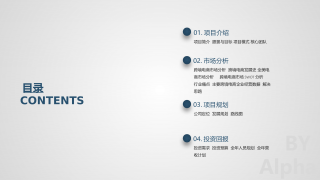柱状果蔬贮藏中水分迁移的过程分析与实验研究
VIP免费
i
摘 要
果蔬保鲜历来是人们最为关注的问题之一,特别是近年来,各种保鲜新技术
的陆续面世,对果蔬的无谓浪费起到了一定的遏制作用,但仍无法从根本上解决
这一难题。归根结底,是人们对果蔬的失水机理没有一个全面的根本性认识。果
蔬种类繁多、影响因素各异,加之难以提高贮藏环境的稳定性,导致无法准确定
量地测定果蔬在某一特定条件下的水分迁移量,这进一步加大了人们研究果蔬失
水机理的难度。本研究着重探讨了以下四个方面的问题:
(1)通过实验系统的热负荷以及测量工具的外观规格,自主设计了可较好控
制温度和相对湿度的果蔬水分迁移实验系统。经多次实验验证,该系统能维持较
长时间的稳态环境,可用于不同果蔬的水分迁移实验。
(2)以荷兰黄瓜为实验对象,分析了不同温度(6℃、9℃、12 ℃、15 ℃)、
相对湿度(40%、60%、80%、99%)等外界条件对其失水的影响,以期进一步阐
明果蔬贮藏过程中的失水机理。同时,以相对失水率和失水速率作为考察荷兰黄
瓜失水能力的指标。实验结果表明:温度与荷兰黄瓜的失水能力呈正相关关系,
相对湿度与荷兰黄瓜的失水能力呈负相关关系;就单因素而言,温度控制在 9℃
以下、相对湿度控制在 80%以上为宜;99%的绝对高湿环境能有效地控制果蔬的失
水;相同温度下 40%、60%、80%相对湿度间的差异相对较小。在低温环境下控制
相对湿度是一种比较可取果蔬保鲜方法。
(3)荷兰黄瓜贮藏过程中,将其表皮硬度以及感官指标与相对失水率联系起
来,可在一定程度上简单地通过荷兰黄瓜的感官变化以及表皮硬度变化确定其相
对失水率,进而确定其品质的好坏。具体判定内容为:表皮硬度在 8.7 N/cm2以上,
感官指标得分在 3分以上,相对失水率在 15%以内,可认为该荷兰黄瓜可食用。
(4)荷兰黄瓜在各组合条件下的失水曲线可近似为抛物线,并得出了各组合
条件下的失水方程及其特征值,据此可预测其他条件下的失水情况。
关键词:柱状果蔬 水分迁移 相对失水率 失水速率 货架期失水预测
ii
ABSTRACT
Fresh-keeping of fruits and vegetables has always been one of the most attention
problems. With the emergence of new technology of fresh preserving, especially in
recent years, the senseless waste of fruits and vegetables has been some slowdown, but
it still can't be fundamentally solved. In balance, people have not reached a
comprehensive consensus about the water loss mechanism of fruits and vegetables. That,
various kinds fruits and vegetables, a multitude of different factors, and hardness to
improve the stability of the storage environment, lead to that we can't determine
accurately and quantitatively water transfer amount of fruits and vegetables in some
condition, and that it also increased the difficulty of understanding the mechanism of
fruits and vegetables water loss. The following four problems emphatically are
researched in the paper.
(1) After the investigation the heat load of experiment system and the appearance
of measurement tools, fruits and vegetables moisture transfer experiment system that
can control its temperature and relative humidity are independently designed. After
repeated experiments verify, this system, can maintain steady experiments environment
for a long time, can be used for water transfer experiments of others.
(2) Received the mechanism of water loss in fruits and vegetables during storage
by analyzing the impact of different temperatures ( 6 ℃, 9 ℃, 12 ℃, 15 ℃) , relative
humidity ( 40% , 60% , 80% , 99%) to the water loss with using Dutch cucumber as
experimental subjects and the relative rate of water loss and water loss rate are used for
testing index of the dehydration ability of Dutch cucumber . Experimental results show
that : the temperature and the water loss of Dutch cucumber was a positive correlation,
and the relative humidity was negatively correlated with the water loss of Dutch
cucumber; single factor , temperature should be controlled below the 9 ℃and relative
humidity should be controlled more than 80% for single factor; absolute humidity
environment of 99% can effectively control the dehydration of fruits and vegetables; the
relative humidity of 40% , 60%, 80% has a relatively small difference under the same
temperature. Controlling the relative humidity at low temperatures is a preferable
method of fruits and vegetables preservation.
(3) Determined the relative rate of water loss and thus determine its quality good or
bad from the change of Netherlands cucumber sensory and the epidermis hardness by
iii
contacting the skin hardness and sensory indicators with relative rate of water loss
during the storage of Dutch cucumber. The estimate method is as follows: the skin
hardness≥8.7 N/cm2; the scores of sensory Index ≥3, the relative rate of water
loss≤15%.
(4) The dehydration curve of Dutch cucumber in various combination conditions
can be approximated as a Parabola, and get the dehydration equation and its eigenvalue
which could predict dehydration situation under other conditions.
Key Words :Columnar Fruits and Vegetables, Water Migration,
Relative Rate of Water Loss, Water Loss Rate, Water Loss Prediction
in Shelf Life
iv
目 录
中文摘要
ABSTRACT
第一章 绪 论 ...................................................................................................................1
§1.1 课题背景 ...............................................................................................................1
§1.1.1 我国果蔬产业的种植现状 ............................................................................1
§1.1.2 我国果蔬产业面临的困境与发展趋势 ........................................................2
§1.2 果蔬失水原因分析 ...............................................................................................3
§1.2.1 果蔬失去耐藏性的根本原因 ........................................................................3
§1.2.2 内部影响因素 ................................................................................................3
§1.2.3 外部影响因素 ................................................................................................5
§1.3 国内外研究现状 ...................................................................................................6
§1.3.1 果蔬内部传质研究 ........................................................................................6
§1.3.2 果蔬外部传质研究 ........................................................................................7
§1.4 问题的提出 .........................................................................................................10
§1.5 本课题的研究意义及内容 .................................................................................10
§1.5.1 课题研究意义 ..............................................................................................10
§1.5.2 课题研究内容 ..............................................................................................11
第二章 实验台搭建及试验设计 ...................................................................................12
§2.1 实验台搭建 .........................................................................................................12
§2.1.1 实验台简介 ..................................................................................................12
§2.1.2 实验工作室内温度的控制 ..........................................................................15
§2.1.3 实验工作室内相对湿度的控制 ..................................................................15
§2.1.4 实验台的稳定性检验 ..................................................................................16
§2.2 试验设计 .............................................................................................................17
§2.2.1 实验方案设计 ..............................................................................................17
§2.2.2 实验方法设计 ..............................................................................................19
§2.2.3 数据分析方法 ..............................................................................................21
§2.3 本章小结 .............................................................................................................21
第三章 柱状果蔬贮藏中水分迁移的过程分析 ...........................................................22
§3.1 引言 .....................................................................................................................22
§3.2 传质理论简介 .....................................................................................................22
v
3.2.1 菲克定律 ........................................................................................................22
3.2.2 固体中的质量传递 ........................................................................................23
3.2.3 典型扩散过程——单向扩散 ........................................................................26
3.2.4 采后果蔬贮藏中的水分迁移分析 ................................................................27
§3.3 柱状果蔬贮藏初期水分迁移分析 .....................................................................28
§3.4 柱状果蔬贮藏末期水分迁移分析 .....................................................................30
3.4.1 不同温度对果蔬水分迁移的影响 ................................................................30
3.4.2 不同相对湿度对果蔬水分迁移的影响 ........................................................31
§3.5 本章小结 .............................................................................................................31
第四章 温度、相对湿度对荷兰黄瓜水分迁移的影响 ...............................................33
§4.1 引言 .....................................................................................................................33
§4.2 材料与方法 .........................................................................................................33
§4.2.1 实验材料与仪器 ..........................................................................................33
§4.2.2 实验方法 ......................................................................................................33
§4.2.3 数据处理方法 ..............................................................................................34
§4.3 结果与分析 .........................................................................................................34
§4.3.1 荷兰黄瓜的比表面积 ..................................................................................34
§4.3.2 不同温度下荷兰黄瓜的水分迁移情况 ......................................................35
§4.3.3 不同相对湿度下荷兰黄瓜的水分迁移情况 ..............................................40
§4.3.4 不同组合条件对荷兰黄瓜水分迁移的整体分析 ......................................45
§4.4 本章小结 .............................................................................................................46
第五章 荷兰黄瓜货架期间的品质变化与失水预测 ...................................................48
§5.1 引言 .....................................................................................................................48
§5.2 荷兰黄瓜失水的品质变化 .................................................................................48
§5.2.1 实验材料与方法 ..........................................................................................48
§5.2.2 失水与品质变化的关系 ..............................................................................49
§5.2.3 硬度变化 ......................................................................................................50
§5.2.4 感官评价 ......................................................................................................51
§5.3 荷兰黄瓜货架期间的的失水预测 .....................................................................51
§5.3.1 荷兰黄瓜最大失水速率的确定 ..................................................................51
§5.3.2 荷兰黄瓜最大失水量与最大失水时间的确定 ..........................................54
§5.4 本章小结 .............................................................................................................58
第六章 结论与展望 .......................................................................................................60
vi
§6.1 主要结论 .............................................................................................................60
§6.2 课题展望 .............................................................................................................61
参考文献 .........................................................................................................................62
在读期间公开发表论文和承担科研项目及取得成果 .................................................67
致 谢 ...............................................................................................................................68
第一章 绪 论
1
第一章 绪 论
§1.1 课题背景
§1.1.1 我国果蔬产业的种植现状
§1.1.1.1 我国果蔬年种植面积
我国是传统的农业生产大国,在种植业结构中蔬菜和水果年种植面积分别位
列第二、第三[1]。随着农业结构的调整,尤其是农业种植结构的调整,当前我国水
果、蔬菜的种植面积每年仍有一定程度的增加,年增长幅度约为3%左右,如表 1-1
和图 1-1所示(1公顷=15亩)。
表1-1 我国历年水果、蔬菜年种植面积统计表
年份
项目
1990
1995
2000
2005
2006
2007
2008
2009
2010
水 果
(千公顷)
5179
8098
8932
10035
10123
10471
10734
11140
11544
蔬 菜
(千公顷)
6338
9515
15237
17721
16639
17329
17876
18390
19000
图1-1 我国历年水果、蔬菜年种植面积变化图
由于很多地区将种植效益低的农作物转向种植附加值比较高的经济作物,也
就是将种植粮食改为种植水果、蔬菜,因此可以预计,在未来若干年内我国的水
果蔬菜年产量还将有一定程度的提高。
§1.1.1.2 我国果蔬年产量、人均占有量
第一章 绪 论
2
据2011年中国统计年鉴[1],可查到我国近十年来的果蔬年产量资料(表 1-2),
进而得到图 1-2,其直观地反映了我国果蔬年产量的变化情况,表明了近年来我国
果蔬年产量呈逐年增长态势。
表1-2 我国历年水果、蔬菜年产量统计表
年份
项目
2003
2004
2005
2006
2007
2008
2009
2010
水 果
(万吨)
14517.4
15340.9
16120.1
17102.0
18136.3
19220.2
20395.5
21404.4
蔬 菜
(万吨)
54032.3
55064.7
56451.5
58325.5
58541.6
58824.4
59240.3
63683.3
图1-2 我国历年水果、蔬菜年产量变化图
2010年[1],我国水果年产量已超过 2.1 亿吨,蔬菜年产量也已达到 6.3 亿吨,
其中(以第六次人口普查的 13.7 亿计算)人年均水果占有量超过150 kg,人年均
蔬菜占有量超过460 kg,人均占有量均已大大超过世界平均水平。果蔬产业的快速
增长为我国农业经济的发展做出了重要贡献。
§1.1.2 我国果蔬产业面临的困境与发展趋势
据相关部门调查显示[2],果蔬采后的损耗非常巨大,水果达到25~30%,蔬菜
达到30~40%,除了少部分采摘不慎造成腐烂变质外,其中大部分都是由于保鲜
处理失当造成的[3]。果农、菜农丰产但得不到丰收,这直接影响了农民的种植积极
性,更是对我国稀少的自然资源的极大浪费。因此,向贮藏质量要效益成了我国
果蔬产业的当务之急。
摘要:
展开>>
收起<<
i摘要果蔬保鲜历来是人们最为关注的问题之一,特别是近年来,各种保鲜新技术的陆续面世,对果蔬的无谓浪费起到了一定的遏制作用,但仍无法从根本上解决这一难题。归根结底,是人们对果蔬的失水机理没有一个全面的根本性认识。果蔬种类繁多、影响因素各异,加之难以提高贮藏环境的稳定性,导致无法准确定量地测定果蔬在某一特定条件下的水分迁移量,这进一步加大了人们研究果蔬失水机理的难度。本研究着重探讨了以下四个方面的问题:(1)通过实验系统的热负荷以及测量工具的外观规格,自主设计了可较好控制温度和相对湿度的果蔬水分迁移实验系统。经多次实验验证,该系统能维持较长时间的稳态环境,可用于不同果蔬的水分迁移实验。(2)以荷兰...
相关推荐
-
跨境电商商业计划书模版VIP免费

 2025-01-09 28
2025-01-09 28 -
跨境电商方案范文VIP免费

 2025-01-09 14
2025-01-09 14 -
创业计划书VIP免费

 2025-01-09 18
2025-01-09 18 -
xx生鲜APP计划书VIP免费

 2025-01-09 12
2025-01-09 12 -
跨境电商创业园商业计划书(盈利模式)VIP免费

 2025-01-09 9
2025-01-09 9 -
跨境电商计划书VIP免费

 2025-01-09 14
2025-01-09 14 -
绿色食品电商平台项目计划书VIP免费

 2025-01-09 22
2025-01-09 22 -
农产品电子商务商业计划书VIP免费

 2025-01-09 9
2025-01-09 9 -
农村电商平台商业计划书VIP免费

 2025-01-09 14
2025-01-09 14 -
生鲜商城平台商业计划书VIP免费

 2025-01-09 21
2025-01-09 21
作者:陈辉
分类:高等教育资料
价格:15积分
属性:72 页
大小:8.06MB
格式:PDF
时间:2024-11-19






